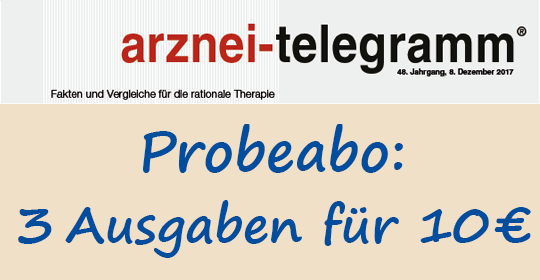Translation of a-t 2021; 52: 38
IN BRIEF
Nitrosamines in medicinal products - an old but still unresolved problem
To our knowledge, aminophenazone (PYRAMIDON), an analgesic marketed by Hoechst in the late 19th century, was the first medicinal product to be withdrawn from the market in the late 1970s as a result of the occurrence of carcinogenic nitrosamines (see a t 1977; No. 8: 64). Even at that time it was known that nitrosamines can occur not only as a result of the combination of nitrates or nitrites and medicinal products in the body, but also "apparently as a result of the manufacturing, processing or storage".1 Nevertheless, the warning sign was not systematically investigated. Expert groups and patients were therefore surprised and alarmed when nitrosamines were discovered in valsartan from Chinese and Indian contract manufacturers in summer 2018, and a total of 2,300 batches had to be withdrawn from the market around the world (a t 2018; 49: 65-6).* Shortly after that there were batch recalls of irbesartan and losartan preparations. The chemical structure of the three angiotensin II antagonists includes a tetrazole ring, the synthesis of which can produce nitrosamines (a t 2019; 50: 14). The discovery of nitrosamines in the antidiabetic drug pioglitazone in April 2019 did not lead to batch recalls as the measured concentrations did not exceed the preliminary limits (a t 2019; 50: 32) that had by that point been established for sartans (a t 2019; 50: 46-7), but did lead to a wake-up call for the European Medicines Agency (EMA) to investigate the "significant finding"2 systematically. The explosive nature of the nitrosamine problem ultimately became apparent as a result of the full market withdrawal of the H2 antagonist ranitidine due to unacceptable nitrosamine quantities of disputable origin, the concentration of which can also increase during storage (see e a t 5/2020b). Nitrosamines can occur depending on the active substance synthesis, raw materials used, reagents, (potentially recycled) solvents, packaging (blister packs), storage and other factors (see a t 2019; 50: 87-8 and 129-30). They were also discovered in mostly sustained-release metformin antidiabetic drugs (a t 2020; 51: 47), and in some cases significantly above the limits in rifampicin (USA), 3 in amitriptyline4 and orphenadrine5 (both Canada). The assumption can be made that a "wide range" of active substances may be affected.6 The EMA has asked pharmaceutical companies to assess the nitrosamine contamination potential of the medicinal products they offer and, if any risks are identified, to submit changes to reduce the risk for approval. After an extension of the deadline because of the COVID-19 pandemic, among other things, this must now be completed by September 2022 (chemical active substances) and July 2023 (biologics).7 By that point, five years will have passed after the initial recalls, and the EMA still needs to process the procedures - a regrettably long time in light of the carcinogenic potential of the impurities. We feel that the lack of transparency about the current level of knowledge about the medicinal products affected and their nitrosamine content is unacceptable, -Ed.
| 1 | Bundesgesundheitsamt: press release, 12 Aug. 1977 |
| 2 | EMA: Assessment report - Nitrosamine impurities in human medicinal products, 25 June 2020; http://www.a-turl.de/?k=arde |
| 3 | FDA: Updates, press release, 28 Jan. 2021; http://www.a-turl.de/?k=esen |
| 4 | Health Canada: Recall of batches APO-AMITRIPTYLINE, 29 Apr. 2021; http://www.a-turl.de/?k=nutz |
| 5 | Health Canada: Recall of batches ORFENACE, 16. Apr. 2021; http://www.a-turl.de/?k=erot |
| 6 | PARR, M.K., JOSEPH, J.F.: J. Pharmac. Biomed. Anal. 2019; 164: 536-49 |
| 7 | EMA: Questions and answers, 23 Apr. 2021; http://www.a-turl.de/?k=amse |
| 8 | GOMM, W. et al.: Dt. Ärztebl. 2021; 118: 357-62 |
| * | At the time of going to press a cohort study by the Federal Institute for Drugs and Medical Devices (BfArM) and WIdO (a scientific institute of local health insurance providers) became available that examines the cancer risk of valsartan contaminated with nitrosamine (endpoint newly diagnosed cancer) based on routine data from 781,000 people insured with AOK (a statutory health insurance) over a period of 40 years (at least one prescription for valsartan). There is no increased overall risk of cancer following three years of use, but there is a slightly elevated, statistically significant risk of liver cancer associated with valsartan that is potentially contaminated with nitrosamine (adjusted hazard ratio 1.16; 95% confidence interval 1.03-1.31). The association remains stable even following additional adjustment for hepatitis and other liver diseases. No causality can be derived from the data. Studies of this type are also unable to take into account confounding factors such as smoking, nutrition, disposition and other factors. Long-term effects on the cancer risk beyond the three-year period must be investigated through further surveys.8 |
© arznei-telegramm (Berlin/Germany), May 2021, protected by copyright laws.
Autor: Redaktion arznei-telegramm - Wer wir sind und wie wir arbeiten
Diese Publikation ist urheberrechtlich geschützt. Vervielfältigung sowie Einspeicherung und Verarbeitung in elektronischen Systemen ist nur mit Genehmigung des arznei-telegramm® gestattet.
